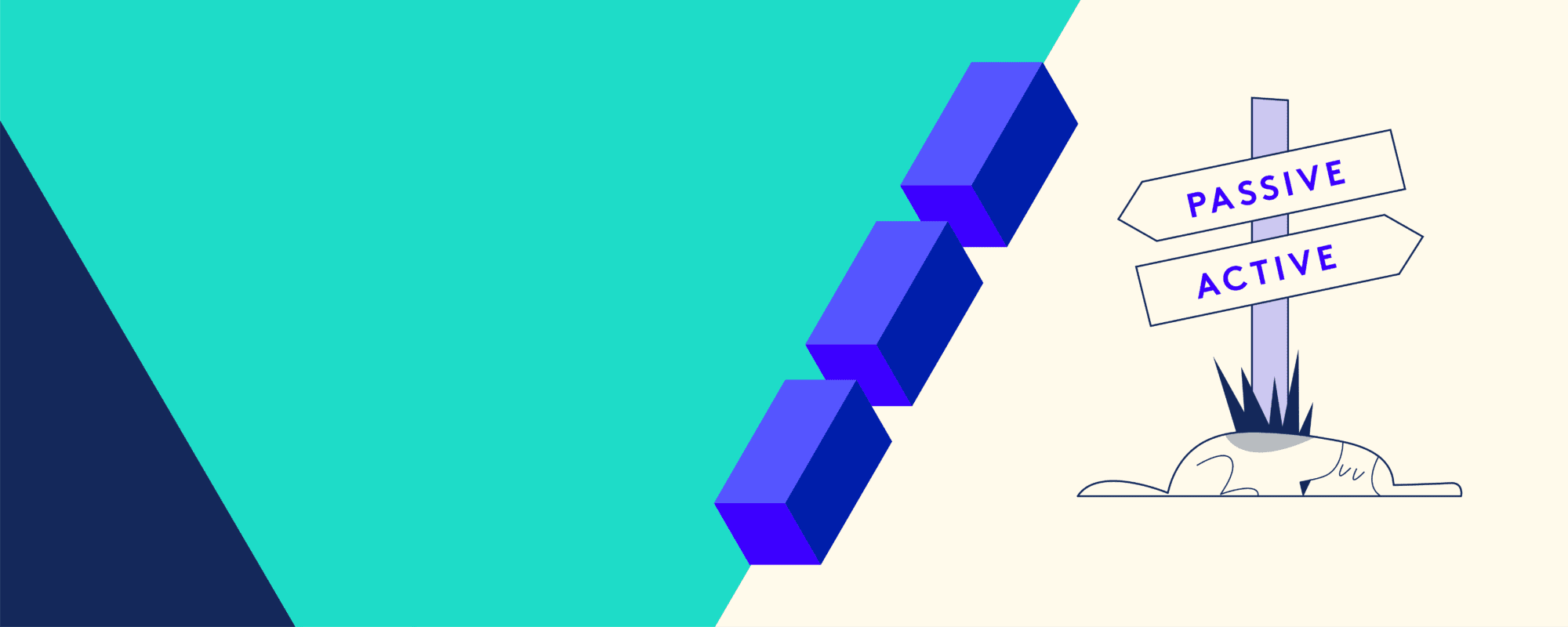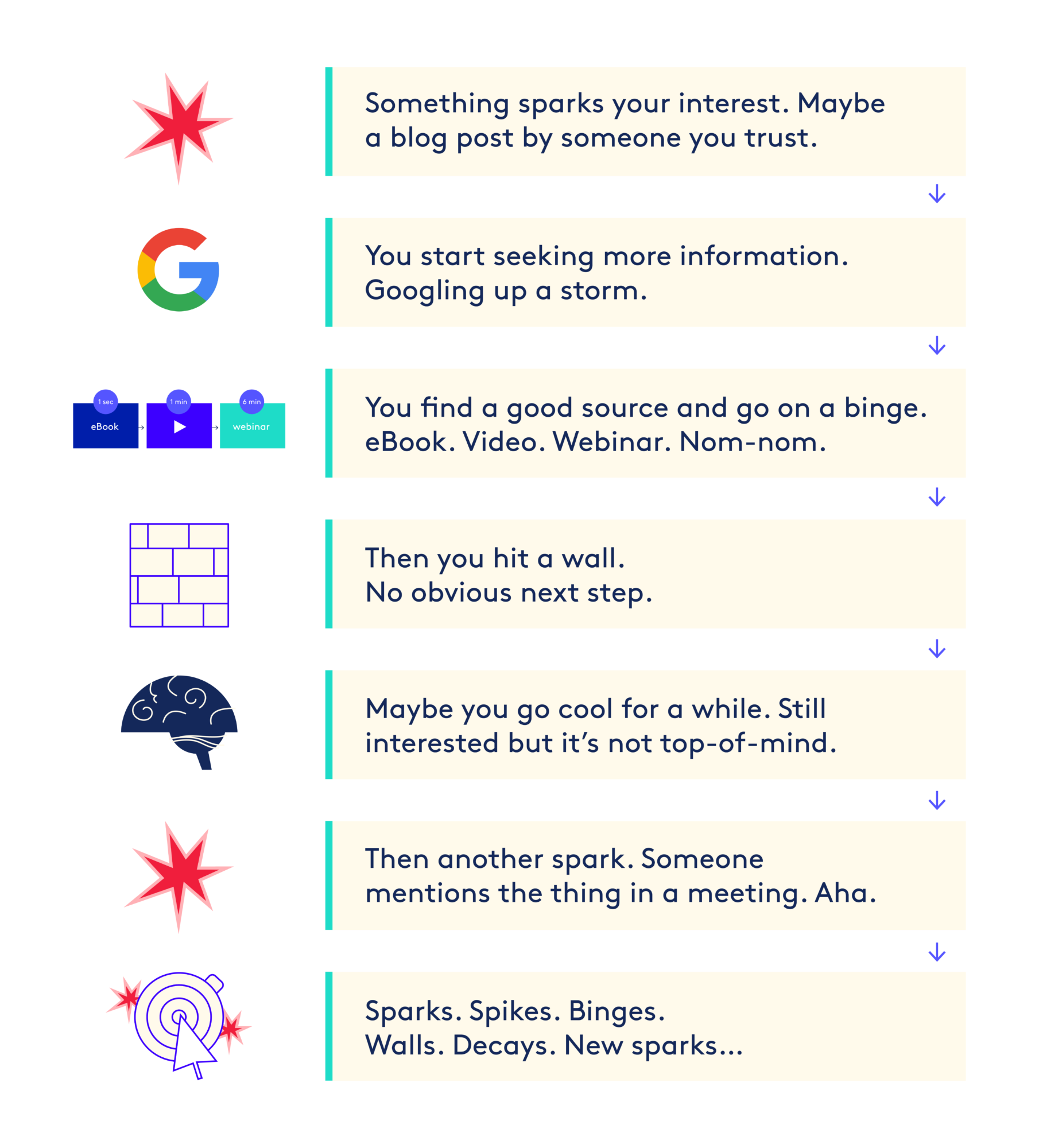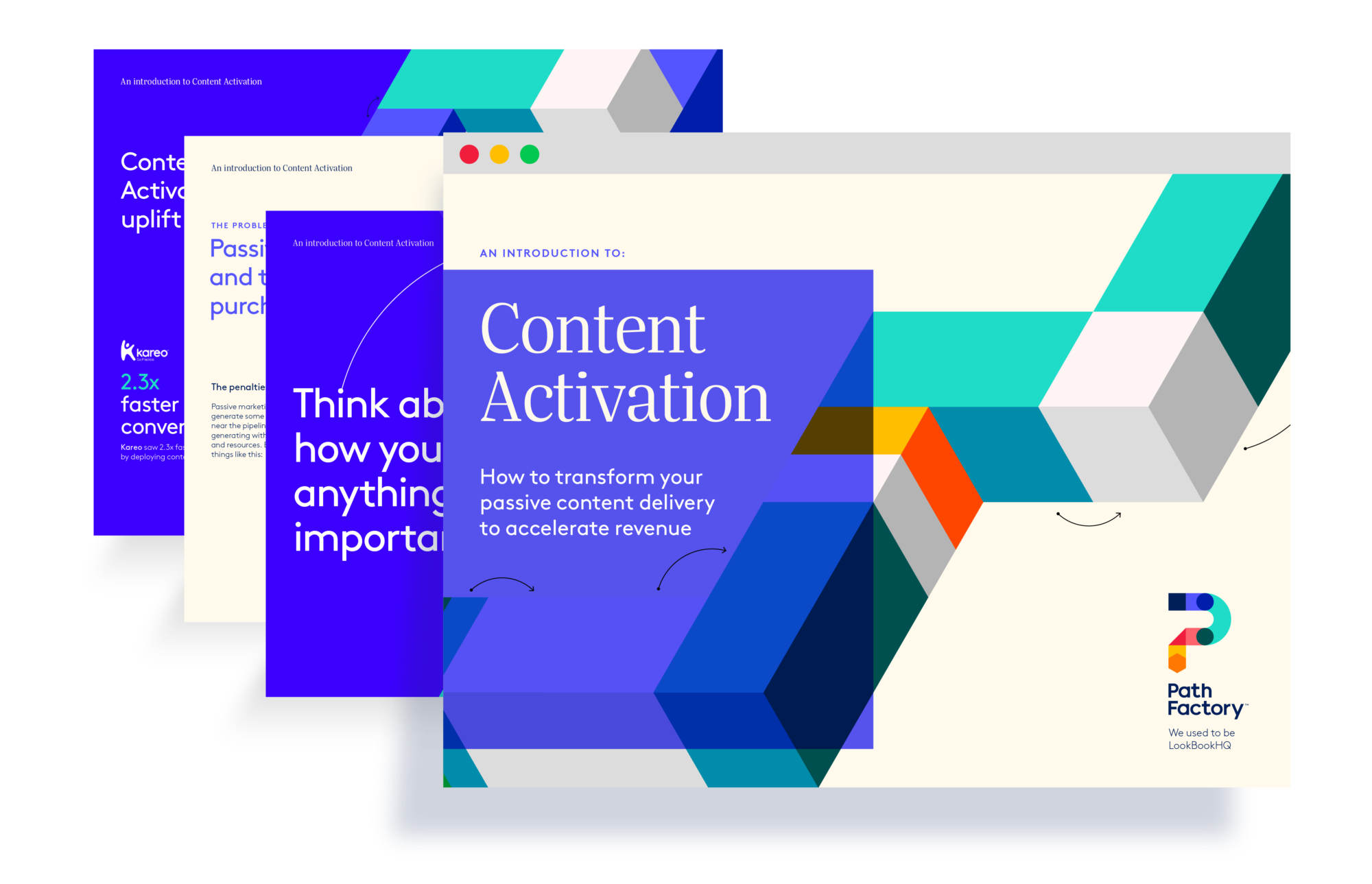
The Perils Of Passive Content: A Cautionary Tale
What’s the last big purchase you made? A car? A house? A yacht perhaps (well, a girl can dream, right?). Now, think about what that buying process looked like:

This is how we buy: it’s, natural, it’s human, it’s life. Yet, this isn’t how B2B marketers typically sell.
We’ve made leaps and bounds in the B2B space over the last decade, with impressive advancements in marketing automation, analytics, attribution, and personalization (to name a few). But something was lost in translation along the way.
Passive content and the chaotic purchase journey
By nature, B2B buying journeys are fragmented and unpredictable and the way B2B marketing works today doesn’t respond to this. It treats everyone-from the casual clickers to the hot prospects-the same.
Ideally, the goal for B2B marketers is to smooth that journey by removing obstacles and dead-ends. Yet, for most buyers, their next step is often riddled with hurdles and anything but clear and accessible. They often run into a roadblock like a form, landing page, or random act of content (with no clear next step). This is what we call passive content and passive marketing, and it just won’t do–our buyers deserve better and we deserve better.
Passive content is built on the fatal assumption that all prospects are oh-so-motivated to purchase your solution, that they’ll scale walls, climb mountains, and leap over any gaps along their path-to-purchase to find the content they need in order to become sales-ready. Truth is: they aren’t and they won’t.
In reality, if you don’t make it easy for buyers to self-educate they’ll wander off (possibly never to return.)
The 6 penalties of passivity
While passive marketing may eventually lead to some pipeline, you’ll never generate the number and quality of leads that would be possible with the same investment and resources put toward Content Activation (more on that later…).
If you’re passively marketing to your prospects you run the risk of:
1. Longer sales cycles
When buyer’s journeys are disjointed, they don’t have the opportunity to binge on content in a single session and therefore the process of self-education is drawn out.
2. Missed opportunities
Without the right kind of data to indicate who is most interested in what types of information, you run the risk of failing to spot your hottest prospects and letting them fly under the radar (*gasp*)
3. Frustrated buyers
If information isn’t easily accessible, it will inevitably lead to a frustrated buyer who will go self-educate elsewhere with other content (that probably belongs to your competitor).
4. Blocked nurture flows
Nurturing prospects according to your schedule and not theirs isn’t conducive to a seamless flow from lead to MQL status. If you’re lucky enough to capture a lead’s attention, you have to capitalize on it then and there, in-the-moment.
5. Static engagement metrics
Measuring engagement based on clicks, downloads and form-fills will prevent your marketing strategy from continuously improving since you have no visibility into what’s working and what isn’t. It’s essential to have access to data that tells you what assets prospects are consuming and how long they’re engaging for.
6. Under-utilized content assets
You poured time and love into creating your content. How many of those assets are now sitting, gathering dust in an under-utilized content hub? It’s ok, you don’t have to answer that question…
Luckily, you can avoid these scary pitfalls because there’s a better way. One that turns every click into the start of a guided purchase journey instead of the end. One that gives you a window into how your customers are engaging (or not engaging) with your content so you can adjust your marketing strategy accordingly.
It’s called Content Activation, and it changes everything.
Transforming passive content experiences into active buying journeys is how many performant marketers are already approaching their biggest challenges.

So, dust off that valuable content hiding away in hubs or scattered all over the internet. It’s time to It’s time to activate your content and:
- Get it working for you to accelerate the buying journey, rather than slow it down
- Gain access to never-before-seen data to spot your hottest prospects and send them to sales faster
- Release the potential locked inside your content assets and data silos
Ready to get started? In this brand-spankin’ new eBook: An Introduction to Content Activation, you’ll learn how to transform your passive content experiences into active buying journeys to accelerate your best leads through the funnel faster.
[Click to read]


